HARE AND HOUNDS (HNH)administrator2019-05-14T16:41:32+07:00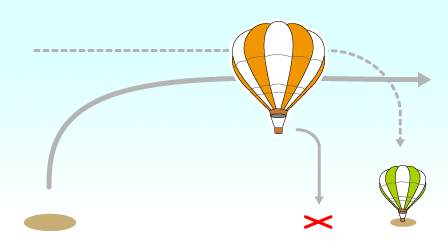
The hot-air-balloon, playing the role of the hare (rabbit), takeoffs at first, and the competition balloons takeoff 15 to 30 min. later. They chase the hare balloon, which is flying away for about one hour and sets the target it lands. They need to guess and find its target and drop the marker toward it.
- Competitors will follow a hare balloon and attempt to achieve a mark or valid track point close to a target displayed
by the hare no more than two meters upwind of the basket after landing.
- Task Data:
a) Description of hare balloon
b) Intended flight duration of hare balloon
- The result is the distance from the mark or closest valid track point to the target. Smallest result is best.
- Variation from intended flight duration of the hare shall not be grounds for complaint.
- The hare may deflate after landing and may be removed from the field.
- The hare balloon may display a banner hanging below his basket. No competitor shall display any banner hanging
below the basket during this task.
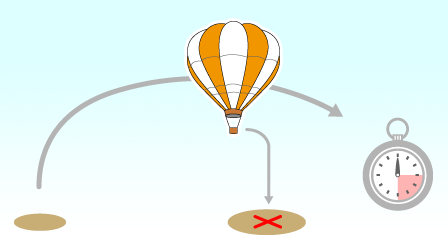 This task is similar to Fly In (FIN), and the target is set in the event area by the Event Director. Pilots fly from some distances away (for example, 5km away) toward the target and drop the marker. However the time and the area to drop the marker are limited then. Pilots have to fly calculating the time to reach the target.
This task is similar to Fly In (FIN), and the target is set in the event area by the Event Director. Pilots fly from some distances away (for example, 5km away) toward the target and drop the marker. However the time and the area to drop the marker are limited then. Pilots have to fly calculating the time to reach the target.
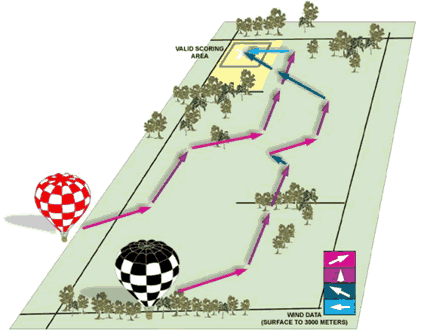

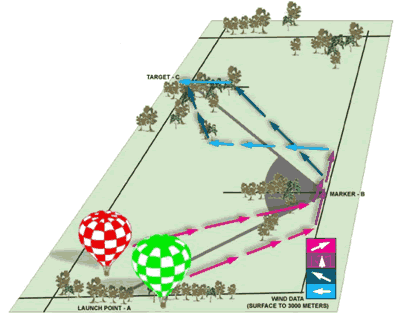 Competitors will attempt to achieve the greatest change of direction in flight.
Competitors will attempt to achieve the greatest change of direction in flight.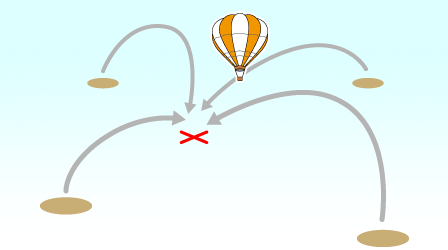 Event Directors decide one goal. It is usually set in the launch area of Kase Riverbed. Balloons takeoff from some distances away (for example, 5km away) for the target. They can take off and fly from any directions.
Event Directors decide one goal. It is usually set in the launch area of Kase Riverbed. Balloons takeoff from some distances away (for example, 5km away) for the target. They can take off and fly from any directions.
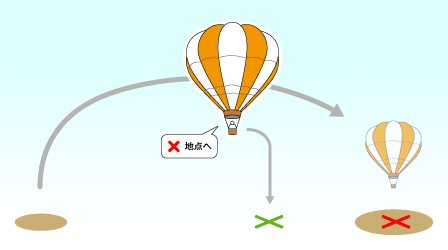 This game is always held with the combination of other tasks. At first, pilots drop markers of another task. At this time, pilots need to write where to drop the next marker. This task is similar to Pilot Declared Goal (PDG).
This game is always held with the combination of other tasks. At first, pilots drop markers of another task. At this time, pilots need to write where to drop the next marker. This task is similar to Pilot Declared Goal (PDG).
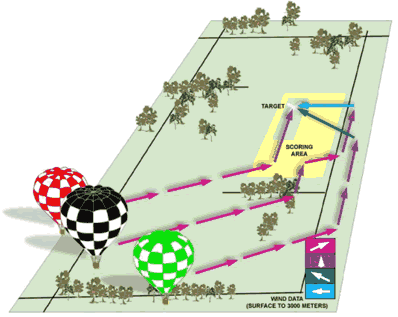 Competitors will attempt to achieve a mark or closest valid track point within a scoring area(s) close to a set goal.
Competitors will attempt to achieve a mark or closest valid track point within a scoring area(s) close to a set goal. The hot-air-balloon, playing the role of the hare (rabbit), takeoffs at first, and the competition balloons takeoff 15 to 30 min. later. They chase the hare balloon, which is flying away for about one hour and sets the target it lands. They need to guess and find its target and drop the marker toward it.
The hot-air-balloon, playing the role of the hare (rabbit), takeoffs at first, and the competition balloons takeoff 15 to 30 min. later. They chase the hare balloon, which is flying away for about one hour and sets the target it lands. They need to guess and find its target and drop the marker toward it.
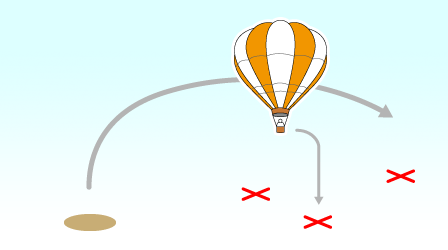 Balloons fly to the goal which the Event Director ordered. It is usually 4 to 6 km away from the goal. The pilots drop the marker toward the center of the target and the winner who made the nearest gets 1000 points. This is very similar to Judge Declared Goal / JDG. The difference between HWZ and JDG is that there are plural targets in HWZ and pilots need to decide one target from them.
Balloons fly to the goal which the Event Director ordered. It is usually 4 to 6 km away from the goal. The pilots drop the marker toward the center of the target and the winner who made the nearest gets 1000 points. This is very similar to Judge Declared Goal / JDG. The difference between HWZ and JDG is that there are plural targets in HWZ and pilots need to decide one target from them.
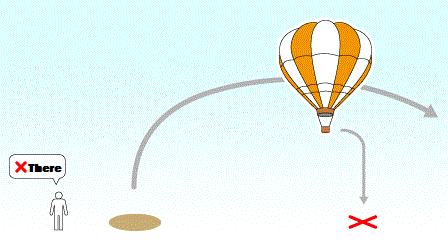 Balloons fly to the goal which the Event Director ordered. It is usually 4 to 6 km away from the goal. The pilots drop the marker toward the center of the target. The winner who made the nearest gets 1000 points.
Balloons fly to the goal which the Event Director ordered. It is usually 4 to 6 km away from the goal. The pilots drop the marker toward the center of the target. The winner who made the nearest gets 1000 points.
